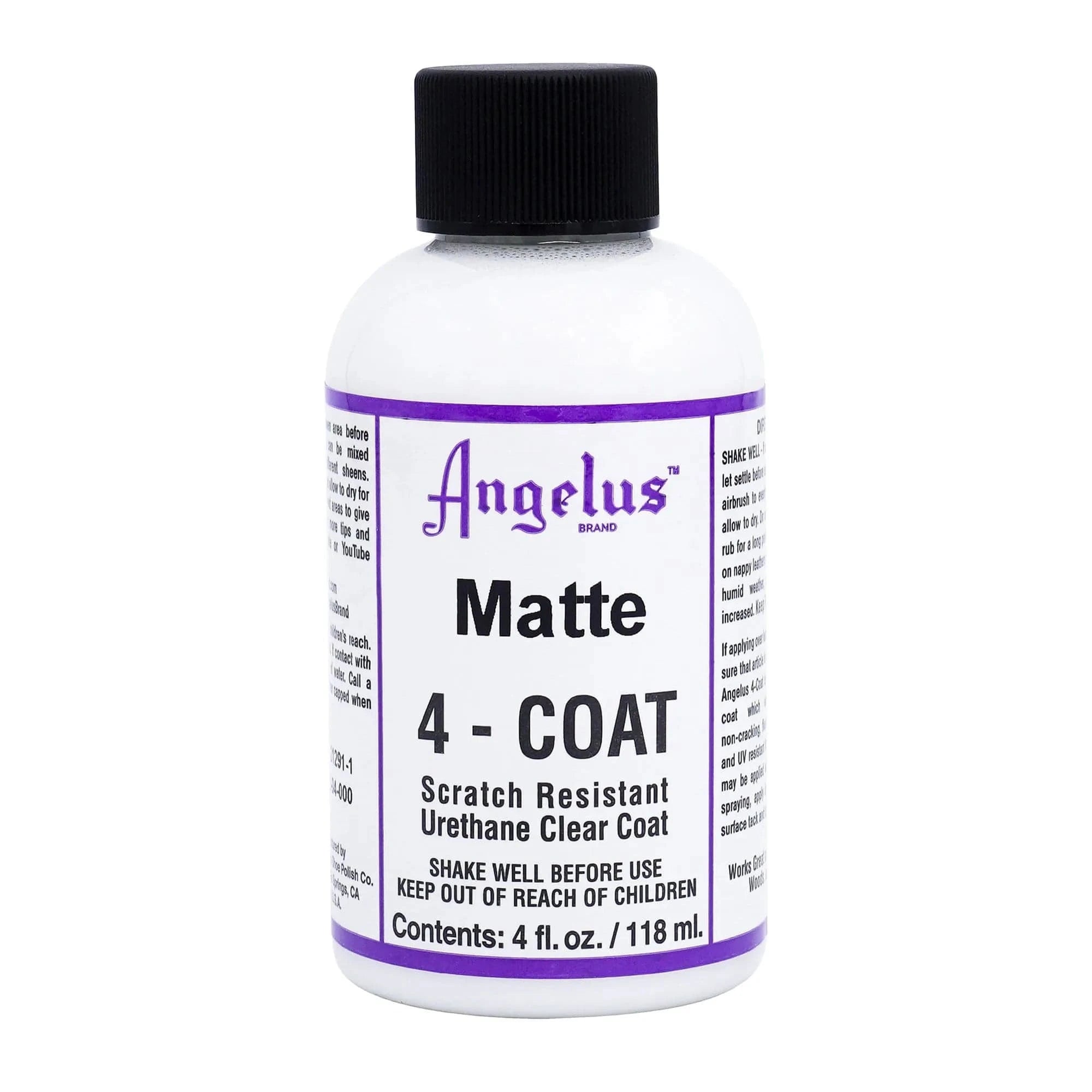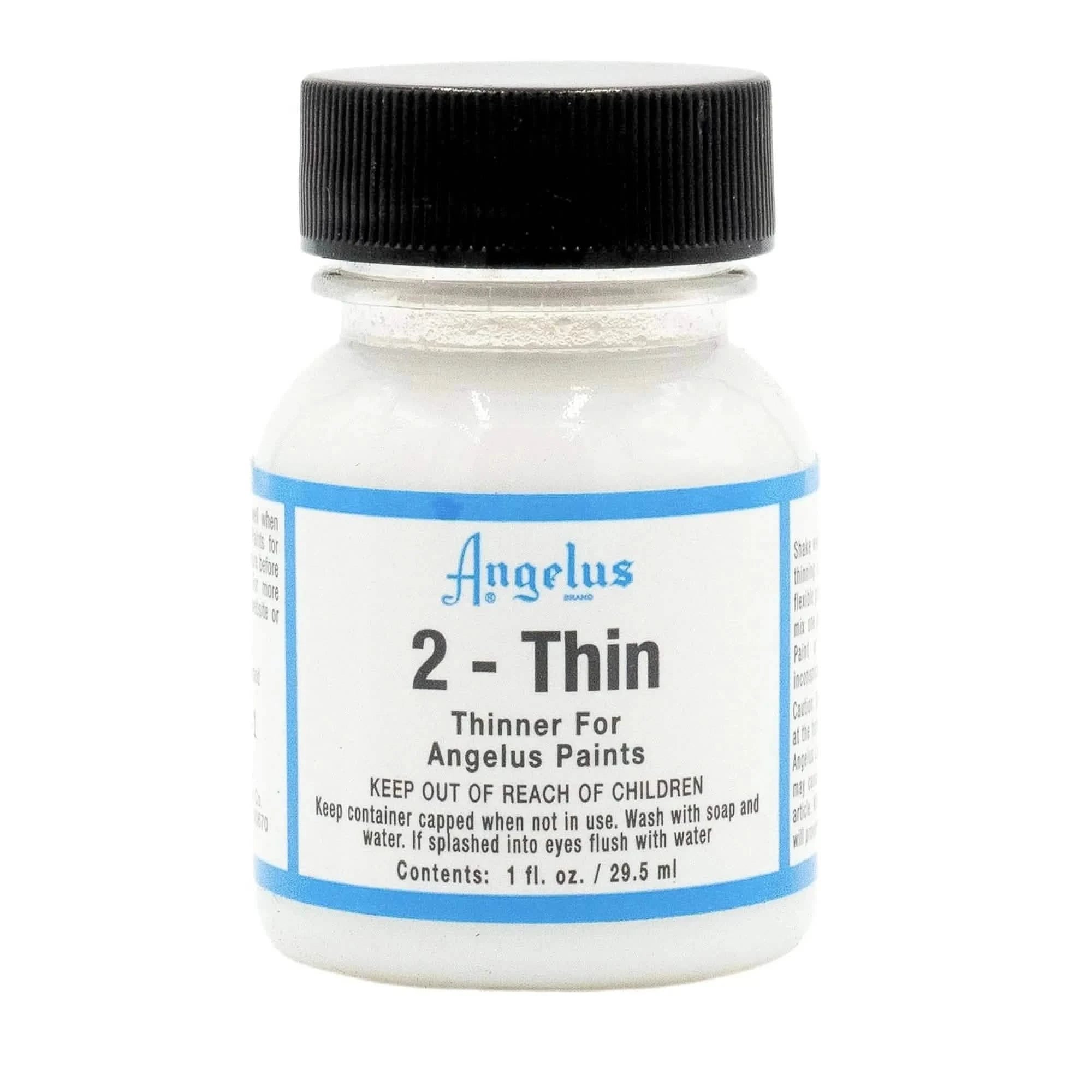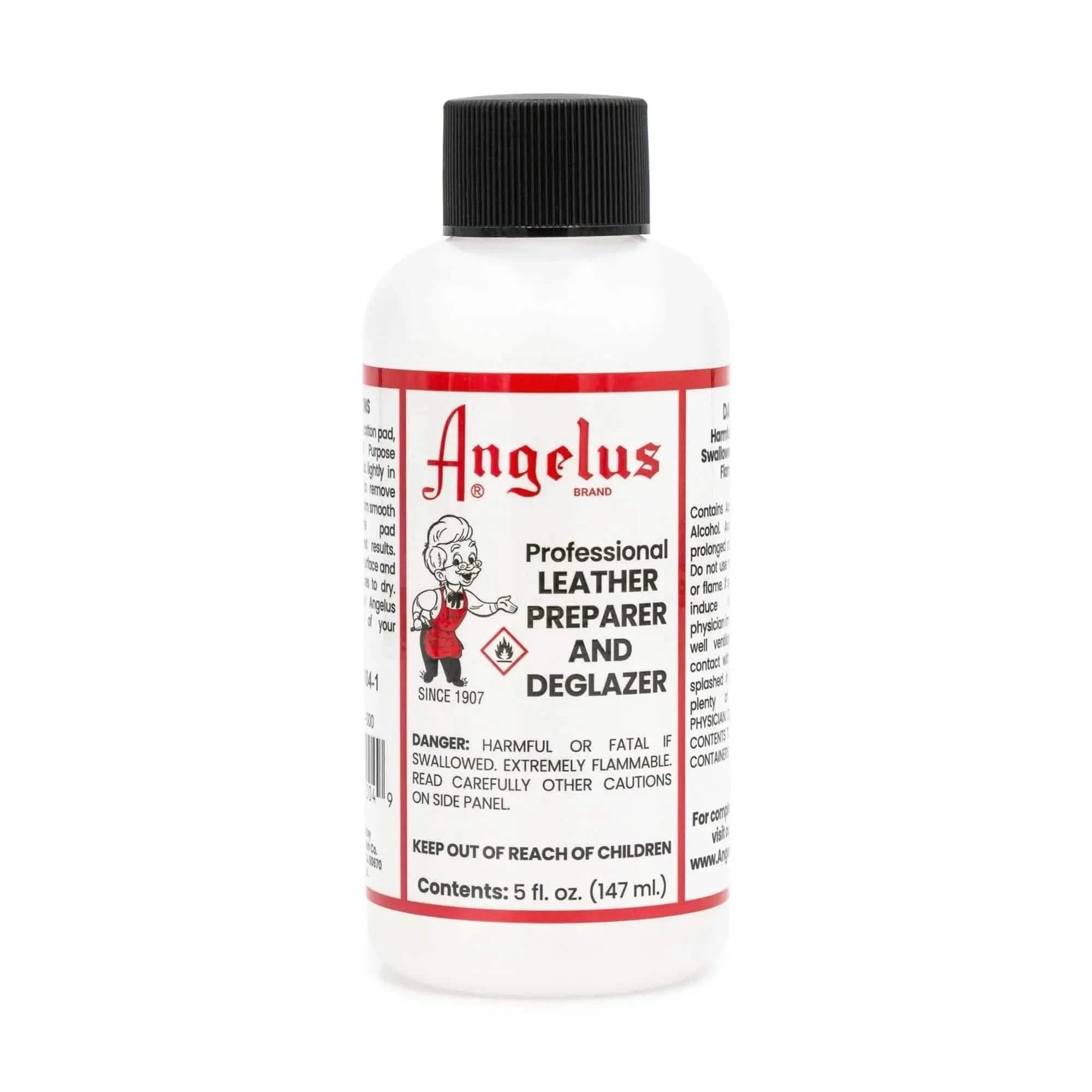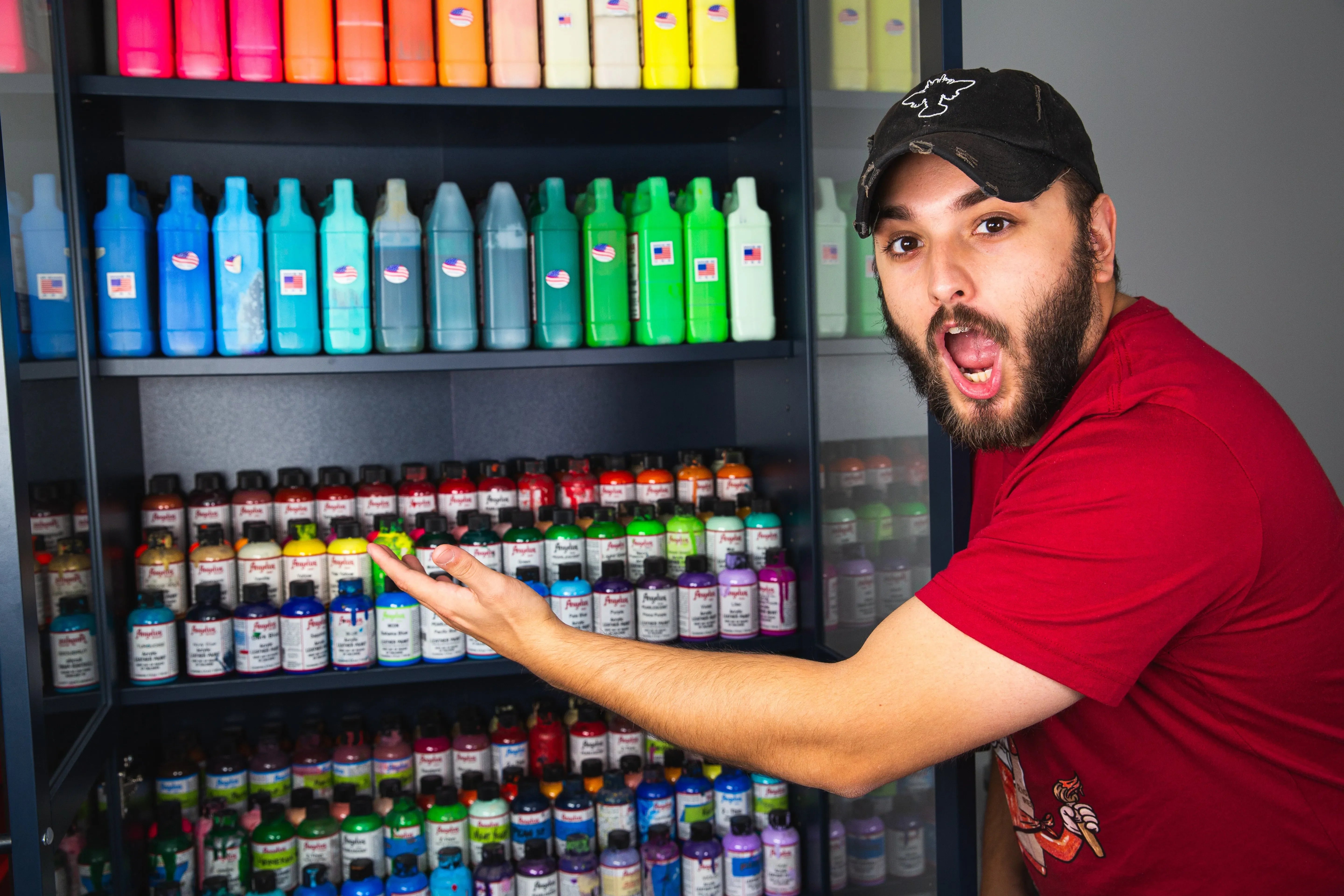Introduction
Ever wondered how the pros achieve flawless color-matching on custom kicks? In this detailed tutorial, sneaker artist, DeJesus Custom Footwear, breaks down his step-by-step process for mixing the perfect hues using Angelus Leather Paints.
Creator Spotlight
Creator Spotlight
Creator Spotlight
Creator Spotlight
Creator Spotlight
Creator Spotlight
Creator Spotlight
Creator Spotlight
Creator Spotlight
Creator Spotlight
Creator Spotlight
Creator Spotlight
Creator Spotlight
Creator Spotlight
Creator Spotlight
Creator Spotlight
Creator Spotlight
Creator Spotlight
Creator Spotlight
Creator Spotlight
DeJesus Custom Footwear | Dillon DeJesus
I’m Dillon DeJesus, a custom sneaker artist based in Chicago. I create one-of-a-kind, hand-painted sneakers inspired by pop culture, storytelling, or wild ideas that shouldn’t work—but somehow do. I design for sneaker collectors, athletes, and brands alike. It all started when I messed around with a pair of shoes and some paint while studying architecture. Over time, that hobby turned into a full-blown career. Now I share my journey and passion for creating online and try to help others grow along the way.
Creator Spotlight
Creator Spotlight
Creator Spotlight
Creator Spotlight
Creator Spotlight
Creator Spotlight
Creator Spotlight
Creator Spotlight
Creator Spotlight
Creator Spotlight
Creator Spotlight
Creator Spotlight
Creator Spotlight
Creator Spotlight
Creator Spotlight
Creator Spotlight
Creator Spotlight
Creator Spotlight
Creator Spotlight
Creator Spotlight
Jade Color Mix Tutorial
Step 1: Start with a Base of Flat White
Mix in 50% Angelus Flat White Paint to ensure a clean, true-to-tone base for your custom blend.

Mix in 50% Angelus Flat White Paint to ensure a clean, true-to-tone base for your custom blend.

Step 2: Mix in Turquoise Paint
Next, introduce 40% Angelus Turquoise Paint to bring perfect cool undertone.

Step 3: Tint with a Hint of Midnight Green
Next, mix in 10% Angelus Midnight Green Paint to bring that rich, vibrant jade tone. Start with just a little—you can always deepen it later.

Step 4: Mix and Test Your Shade
Blend thoroughly on a palette and test on a scrap surface or swatch card before applying. Adjust ratios if needed for your ideal "Jade" shade.





Creator Questions
I'm based in Chicago, Illinois.
It was the first thing that popped up when I searched for what paint to use on shoes. Then I saw some artists getting killer results with it, so I had to give it a try! And yeah… totally worth it.
Pretty much anything art-related, but mostly shoes. About 90% of what I create is custom sneakers, so your products are a huge part of my everyday workflow. If it involves paint and creativity, chances are Angelus is in the mix.
Top 5? That’s tough, but here goes. Metallic Silver is my go-to for adding a little shimmer to any color. 2-Thin is clutch for getting paints airbrush-ready. Matte 4-Coat completely replaced Duller for me. Leather Preparer & Deglazer is a must for prep and fixing any slip-ups. And Light Grey? That one’s just my favorite color to paint with. Clean, smooth, and super versatile.
Don’t wait until you feel “ready” or have the perfect setup. You’ll learn more by doing than overthinking. Make a mess, make mistakes, make something weird, and have fun doing it. Now get out there and just create.
🛒 Dillon's Top 5 Angelus Products

Angelus Metallic Silver Paint
$4.95

Matte 4-Coat
$6.95

2-Thin Paint Thinner
$3.95

Leather Preparer and Deglazer
$5.95
-$3.67

Angelus Light Grey Paint
$3.95

Angelus Metallic Silver Paint
$4.95

Matte 4-Coat
$6.95

2-Thin Paint Thinner
$3.95

Leather Preparer and Deglazer
$5.95
-$3.67

Angelus Light Grey Paint
$3.95

Angelus Metallic Silver Paint
$4.95

Matte 4-Coat
$6.95

2-Thin Paint Thinner
$3.95

Leather Preparer and Deglazer
$5.95
-$3.67

Angelus Light Grey Paint
$3.95

Angelus Metallic Silver Paint
$4.95

Matte 4-Coat
$6.95

2-Thin Paint Thinner
$3.95

Leather Preparer and Deglazer
$5.95
-$3.67

Angelus Light Grey Paint
$3.95

Angelus Metallic Silver Paint
$4.95

Matte 4-Coat
$6.95

2-Thin Paint Thinner
$3.95

Leather Preparer and Deglazer
$5.95
-$3.67

Angelus Light Grey Paint
$3.95

Angelus Metallic Silver Paint
$4.95

Matte 4-Coat
$6.95

2-Thin Paint Thinner
$3.95

Leather Preparer and Deglazer
$5.95
-$3.67

Angelus Light Grey Paint
$3.95
Unlock More Inspiration
Dive deeper into our Creator Spotlight series and discover new tutorials from top artists in the community. Whether you're looking to master advanced techniques or spark fresh ideas, these step-by-step guides will take your custom game to the next level.

